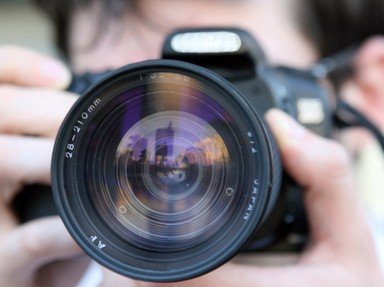Quiz Answer Key and Fun Facts
1. A technique that is said to create more tension, energy and interest than simply centering your subject is to imagine your image divided into nine equal parts by two vertical and two horizontal lines, then try to have elements of your photo coincide with these lines. What is this technique known as?
2. Taking geometry into account when choosing your subject is another compositional technique that can be approached in different ways. What is the primary geometrical aspect being utilized here?
3. The figurine at the center of this photograph with the unfocused objects around it provides an example of forced perspective.
4. Using these dynamic geometrical shapes can enhance your image by implying strength, serenity and stability. What shapes?
5. This photographic technique involves patterns, colours and depth and typically involves detail across the whole picture. It might be strange (with this photo) to apply this composition term in relation to water, but what is it called?
6. Another widely-accepted photography rule states that images are more visually appealing when there is an odd number of subjects. This is called the rule of odds.
7. This technique makes it very plain to the viewer what the subject of the photograph is. It can be done with close-ups or, as with this example, having your subject take up the large majority of the space available. What is this called?
8. An example of this technique is to put your focus on an object in the foreground and allow everything else to fuzz into the background. What is the name of this compositional technique?
9. Sometimes the size or scope of your subject can be difficult to portray without something else to compare it against, giving depth. This is an example of what?
10. To grasp this last compositional technique, I have added a graphic to show how it works. Here, instead of dividing your photo into a 3x3 grid (another rule we discussed), the frame is divided into a series of squares along the spiral called a phi grid. You can see how the elements of the statue and bookcase and shelves combine with unfocused foreground to approximate the flow of the spiral. This 'Fibonacci spiral' is the basis for the name of the technique, which is known as the...?
Source: Author
reedy
This quiz was reviewed by FunTrivia editor
WesleyCrusher before going online.
Any errors found in FunTrivia content are routinely corrected through our feedback system.
